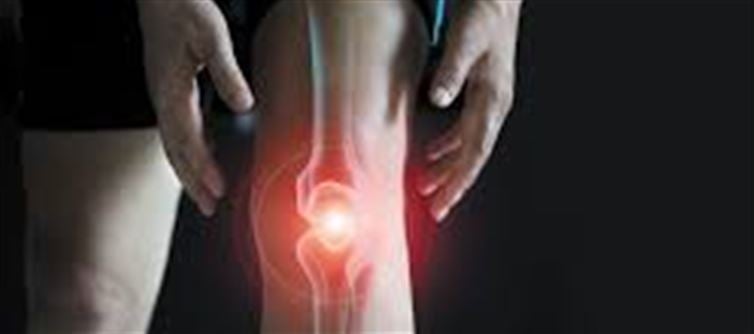
Joint pain is a common issue that many people face, and it can range from mild discomfort to debilitating pain. Whether it’s your knees, shoulders, hips, or other joints, the discomfort can make even the simplest tasks seem challenging. Fortunately, there are natural remedies and effective management strategies that can help alleviate joint pain and improve your quality of life. Let’s explore the advice that doctors recommend for joint pain relief.
1. Regular Exercise: Movement is Key
It might seem counterintuitive, but exercise is one of the best ways to manage joint pain. Regular movement helps keep the joints lubricated, strengthens the muscles around the joints, and improves flexibility.
· Doctor’s Tip: Opt for low-impact exercises like walking, swimming, or cycling to avoid putting too much stress on your joints while still improving mobility.
· Stretching before and after exercise can help keep muscles and joints flexible.
2. Weight Management: Lighten the Load
Excess body weight puts extra pressure on weight-bearing joints like the knees, hips, and spine, which can worsen joint pain. By maintaining a healthy weight, you can significantly reduce the strain on your joints.
· Doctor’s Tip: Even a small amount of weight loss can make a big difference in reducing joint discomfort. A balanced diet combined with regular exercise is key.
3. Anti-Inflammatory Diet: Eat Your Way to Relief
Certain foods are known for their anti-inflammatory properties and can help ease joint pain. Omega-3 fatty acids, found in fish like salmon, are especially beneficial, as they reduce inflammation and protect joint health.
· Doctor’s Tip: Include turmeric (curcumin), ginger, olive oil, and leafy greens in your diet to help reduce inflammation naturally. Avoid processed foods that can trigger inflammation.
4. Hot and Cold Therapy: Simple Yet Effective
Using heat and cold treatments can be an effective way to manage joint pain. Heat helps relax tight muscles and improve blood flow, while cold therapy reduces inflammation and numbs the area to ease pain.
· Doctor’s Tip: Apply a warm compress for stiffness and cold packs for swelling or acute pain. Always wrap the hot or cold pack in a cloth to protect your skin.
5. Herbal Remedies: Natural Pain Relief
Certain herbs have been traditionally used for their anti-inflammatory properties. Boswellia, Devil’s Claw, and Ginger are popular for helping alleviate joint pain and improving joint function.
· Doctor’s Tip: Consider taking Boswellia or Turmeric supplements. However, always consult your doctor before adding any new supplements to your routine, especially if you're on other medications.
6. Joint Supplements: Support for Cartilage Health
Supplements like glucosamine and chondroitin are commonly used to support cartilage health and improve joint function. They may help reduce pain, improve mobility, and slow the progression of joint damage, especially in conditions like osteoarthritis.
· Doctor’s Tip: Talk to your healthcare provider before starting any joint supplements to ensure they are appropriate for you.
7. Physical Therapy: Strengthen and Stabilize
Physical therapy involves targeted exercises designed to strengthen the muscles around the joint, improving stability and reducing pain. A trained physiotherapist can create a customized program based on your specific joint issues.
· Doctor’s Tip: Physical therapy can be an excellent long-term solution for managing joint pain and preventing further damage. It’s often recommended for conditions like arthritis or injuries.
8. Mindfulness and Stress Reduction: Relax Your Body
Chronic pain can often be exacerbated by stress. Learning techniques like meditation, deep breathing, and yoga can help manage stress and improve your overall well-being, including reducing pain perception.
· Doctor’s Tip: Mindfulness practices, such as deep breathing exercises or guided meditation, can help calm the nervous system and reduce the sensation of pain. yoga is also a great way to improve both mental and physical health.
9. Massage Therapy: Relieve Muscle Tension
Massage therapy helps reduce muscle tension and can also improve circulation around the affected joint. A gentle massage can promote relaxation, reduce stiffness, and alleviate pain.
· Doctor’s Tip: Regular therapeutic massage can provide short-term relief from pain, but it should be combined with other treatments like exercise and stretching for best results.
10. Adequate Rest: Don’t Overdo It
While staying active is essential for joint health, it’s equally important to allow the body to rest. Overworking the affected joint can lead to more pain and strain. Proper rest allows the body to heal and reduces inflammation.
· Doctor’s Tip: Alternate between activity and rest, ensuring that you don’t overstrain your joints. Use supportive pillows when sleeping and consider a mattress that reduces pressure on your joints.
Conclusion:
Joint pain can be a long-term issue, but with the right strategies, you can manage it effectively. Incorporating natural remedies like diet changes, regular exercise, and hot/cold therapy can make a significant difference. Always consult your doctor before trying new treatments, especially if you have chronic conditions or other health issues. Taking a holistic approach—a combination of proper management, self-care, and professional guidance—can help you lead an active and pain-free life.
Disclaimer:
The views and opinions expressed in this article are those of the author and do not necessarily reflect the official policy or position of any agency, organization, employer, or company. All information provided is for general informational purposes only. While every effort has been made to ensure accuracy, we make no representations or warranties of any kind, express or implied, about the completeness, reliability, or suitability of the information contained herein. Readers are advised to verify facts and seek professional advice where necessary. Any reliance placed on such information is strictly at the reader’s own risk..jpg)




 click and follow Indiaherald WhatsApp channel
click and follow Indiaherald WhatsApp channel